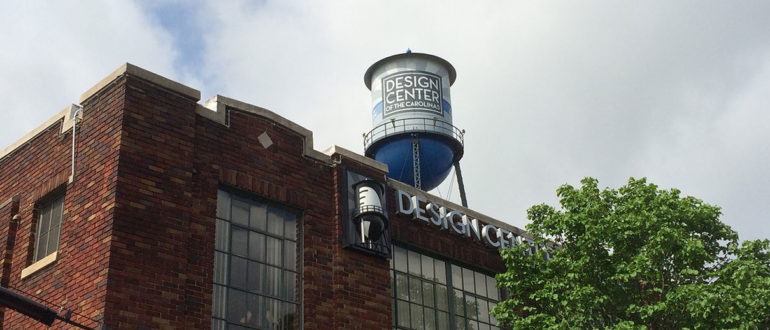Well, more “existing” than old, as you discover the game-changing value of Adaptive Reuse.
Our collective consciousness about the causes of climate change in recent years has been growing, the result being greater efforts to reduce the waste of embodied energy associated with new construction, optimize and improve land conservation, and control urban sprawl.
It is with these three main goals in mind that adaptive reuse becomes a suitable choice to minimize the environmental impact and carbon footprint created by new structures, as was done with the 1920s Nebel Knitting Mill in Charlotte pictured above, today the Design Center of the Carolinas.
We in the design community often see more glamour in creating a new gleaming building located on a vast open field where it can stand by itself, or to work free of constraints without the complications imposed by an existing shell or within a busy, dense city.
There is no doubt that, as designers, we love to create and, as service providers, one of our goals is to deliver structures to meet our clients’ spatial necessities. But at what cost? Or better said, in a client’s cost-benefit analysis, can we minimize the cost of construction by repurposing an existing structure rather than building a new one?
In our case at Integra, the question comes up with every project, and by cost we don’t mean only money.
After weighting the cost of environmental damage, resource depletion, and loss of irreplaceable greenfields, our first consideration is the extent to which a construction project can factor in what is really necessary.
And so we ask whether it is necessary to demolish a perfectly sound structure just because it’s ugly, outdated, or because we can pay for a new one? Instead, would it make more sense and slash construction costs to take a closer look at that property and simply redesign it to fit the client’s purpose today and in the future?
It is at that juncture where designers and influencers can help society and our clients realize there are lots of opportunities within what’s available around us. There’s no shame in designing and building new, and by no means are we advocating the halt of all new construction and opt only for reuse.
But it is simply a smarter way forward to embrace as the initial design default the adaptive reuse of an existing, abandoned or underused structure in an already impacted area, in case it turns out to be a superior choice over building from scratch.
Design as a driving force of value
As growth makes developable land a luxury, or in economies undergoing hard times, the option of adapting existing structures becomes not just more suitable, but at times inevitable. Recent experiences in cities where tough times have hit especially hard, for example—think Detroit and its tens of thousands of abandoned structures—reveal the need to adopt policies for renovation to bring new life into existing neighborhoods and their buildings, with the goal of kickstarting a rebirth in those jurisdictions.
On the other hand, even in healthy economies, industries evolve and new technologies or trades emerge, and lots of structures become obsolete or abandoned due to the transformation or extinction of the original purpose for what they were built.
We see a glaring example on our home base in the U.S. territory of Puerto Rico and the vast real estate owned by the local Industrial Development Company (PRIDCO), where more than 283 former industrial properties totaling more than 4.3 million square feet, sit vacant in every corner of the island, with the industrial community praying for the unlikely return of the industrial bonanza experienced more than 40 years ago.
A large number of these buildings are perfectly good candidates to be adapted to other uses, such as schools, nursing homes, retails stores, and even housing. In these and similar cases, it simply takes an open mind and creativity to see what is required and to visualize these buildings repurposed for something completely different.
Adaptive reuse shows that through conscious analysis, creativity, and efficient space transformation, designers can become the driving force bringing to life abandoned structures, conserving precious natural resources, AND creating greater value for developers and stakeholders, all at the same time.

